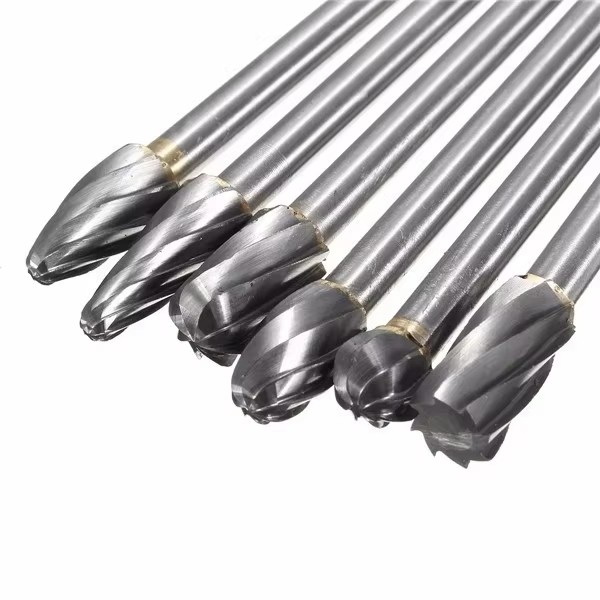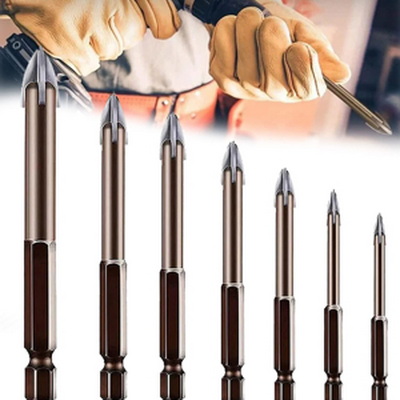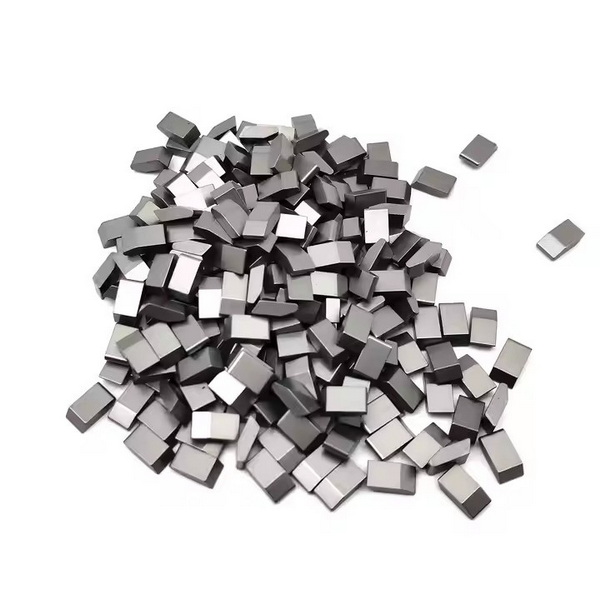Content Menu
● Introduction to Tungsten Carbide
>> Tungsten Carbide Applications
>>> Industrial Applications
>>> Jewelry Applications
● Comparison with Precious Metals
>> Gold
>> Platinum
>> Tungsten Carbide vs. Precious Metals
● Is Tungsten Carbide a Precious Metal?
● Additional Considerations
>> Environmental Impact
>> Recycling and Sustainability
>> Technological Advancements
>> Market Trends
● Conclusion
● FAQs
>> 1. What is Tungsten Carbide Used For?
>> 2. Is Tungsten Carbide Hypoallergenic?
>> 3. Can Tungsten Carbide Rings Be Resized?
>> 4. How Does Tungsten Carbide Compare to Platinum in Jewelry?
>> 5. What Are the Common Binders Used with Tungsten Carbide?
● Citations:
Tungsten carbide, a compound formed by combining tungsten and carbon, is renowned for its exceptional hardness and durability. It is widely used in industrial applications, such as cutting tools and wear parts, as well as in jewelry due to its scratch resistance and stylish appearance. However, the question remains: is tungsten carbide considered a precious metal? To answer this, we need to explore the properties and uses of tungsten carbide and compare it with traditional precious metals.

Introduction to Tungsten Carbide
Tungsten carbide is a chemical compound with the formula WC, consisting of tungsten and carbon atoms in a hexagonal crystal structure. This structure contributes to its ceramic-like properties, including high hardness and wear resistance. Tungsten carbide is approximately three times as stiff as steel and twice as dense, with a Young's modulus of about 530–700 GPa.
Tungsten Carbide Properties:
- Hardness: Tungsten carbide has a Mohs hardness of 9–9.5, making it one of the hardest substances known, second only to diamond.
- Density: It has a high density of about 15.6 g/cm³, which is significantly heavier than many metals used in jewelry.
- Melting Point: Tungsten carbide has a high melting point of approximately 2,870°C, which is lower than pure tungsten but still much higher than most precious metals.
Tungsten Carbide Applications
Industrial Applications
Tungsten carbide is extensively used in industrial settings due to its exceptional hardness and wear resistance. It is a key material in the production of cutting tools, such as drill bits and saw blades, as well as in wear parts for machinery and equipment. Its ability to maintain structural integrity at high temperatures makes it ideal for applications in aerospace and oil drilling.
Industrial Use Cases:
- Cutting Tools: Tungsten carbide is used in drill bits and saw blades for cutting through hard materials like concrete and metal.
- Wear Parts: It is used in machinery components that are subject to high wear and tear, such as bearings and bushings.
Jewelry Applications
In jewelry, tungsten carbide is valued for its durability and scratch resistance, making it a popular choice for wedding bands and other high-wear items. It is hypoallergenic and requires minimal maintenance, as it resists tarnishing and fading.
Jewelry Use Cases:
- Wedding Bands: Tungsten carbide rings are popular due to their durability and stylish appearance.
- Fashion Jewelry: It is used in various designs, including inlays with other materials like wood or carbon fiber.

Comparison with Precious Metals
Precious metals, such as gold, platinum, and silver, are valued for their rarity, aesthetic appeal, and durability. However, they differ significantly from tungsten carbide in terms of hardness and cost.
Gold
Gold is a soft, malleable metal with a Mohs hardness of about 2.5–3. It is highly valued for its luster and rarity but requires frequent polishing to maintain its appearance.
Platinum
Platinum is harder than gold, with a Mohs hardness of about 4.5. It is more expensive than tungsten carbide and is prized for its resistance to corrosion and tarnishing.
Tungsten Carbide vs. Precious Metals
- Hardness: Tungsten carbide is significantly harder than both gold and platinum, making it more durable for everyday wear.
- Cost: Tungsten carbide is generally more affordable than precious metals like platinum, offering a cost-effective alternative for jewelry.
- Appearance: While tungsten carbide has a distinctive gunmetal gray color, it can be treated to achieve various finishes, including white and black.
Is Tungsten Carbide a Precious Metal?
Tungsten carbide is not considered a precious metal in the traditional sense. Precious metals are typically defined by their rarity, aesthetic appeal, and ability to be used as currency or investment vehicles. Tungsten carbide, while valuable for its industrial and jewelry applications, does not fit these criteria. Instead, it is classified as a refractory metal carbide, known for its hardness and durability.
Additional Considerations
Environmental Impact
The production of tungsten carbide involves mining tungsten, which can have environmental implications. Efforts are being made to ensure sustainable mining practices and reduce waste in the production process.
Recycling and Sustainability
Tungsten carbide can be recycled, which helps reduce waste and conserve resources. Recycling programs for tungsten carbide are becoming more prevalent, especially in industries where it is heavily used.
Technological Advancements
Advancements in technology have improved the manufacturing process of tungsten carbide, allowing for more efficient production and better quality control. This has led to increased availability and affordability of tungsten carbide products.
Market Trends
In recent years, there has been a growing demand for tungsten carbide jewelry due to its durability and affordability. This trend is expected to continue as consumers seek more practical and sustainable options for everyday wear.
Conclusion
Tungsten carbide is a versatile and highly durable material that offers significant advantages in both industrial and jewelry applications. Its exceptional hardness and wear resistance make it an ideal choice for cutting tools and high-wear jewelry. However, it is not classified as a precious metal due to its different properties and uses compared to traditional precious metals like gold and platinum.

FAQs
1. What is Tungsten Carbide Used For?
Tungsten carbide is primarily used in industrial applications for cutting tools and wear parts due to its hardness and durability. It is also used in jewelry for its scratch resistance and stylish appearance.
2. Is Tungsten Carbide Hypoallergenic?
Yes, tungsten carbide is hypoallergenic, making it safe for sensitive skin.
3. Can Tungsten Carbide Rings Be Resized?
No, tungsten carbide rings cannot be resized due to their extreme hardness and brittleness. Instead, jewelers often offer exchange policies for incorrect sizes.
4. How Does Tungsten Carbide Compare to Platinum in Jewelry?
Tungsten carbide is harder and more durable than platinum, offering a cost-effective alternative for jewelry. However, platinum is more expensive and prized for its rarity and aesthetic appeal.
5. What Are the Common Binders Used with Tungsten Carbide?
Cobalt and nickel are the most common binders used with tungsten carbide to enhance its toughness and durability. Cobalt is widely used for cutting tools, while nickel offers better corrosion resistance.
Citations:
[1] https://shop.machinemfg.com/tungsten-vs-tungsten-carbide-key-differences/
[2] https://www.allied-material.co.jp/en/techinfo/tungsten_carbide/features.html
[3] https://www.istockphoto.com/photos/tungsten-carbide
[4] https://en.wikipedia.org/wiki/Tungsten_carbide
[5] https://www.jewelryinnovations.com/product-category/mens-rings/rugged-tungsten-bands/
[6] https://www.timelesstungsten.com/kb/tungsten-carbide-vs-platinum/
[7] https://www.linde-amt.com/resource-library/articles/tungsten-carbide
[8] https://www.freepik.com/free-photos-vectors/tungsten-carbide
[9] http://www.tungsten-carbide.com.cn
[10] https://www.titanjewellery.co.uk/Mens/Tungsten-Rings.html
[11] https://www.nobbier.com/blogs/editorial/tungsten-in-jewelry-everything-you-need-to-know/
[12] https://cowseal.com/tungsten-vs-tungsten-carbide/
[13] https://www.tungstenringsco.com/blog/2023/06/tungsten-vs-diamond/
[14] https://www.ihrcarbide.com/news/classification-of-tungsten-carbide/
[15] https://periodictable.com/Elements/074/pictures.html
















